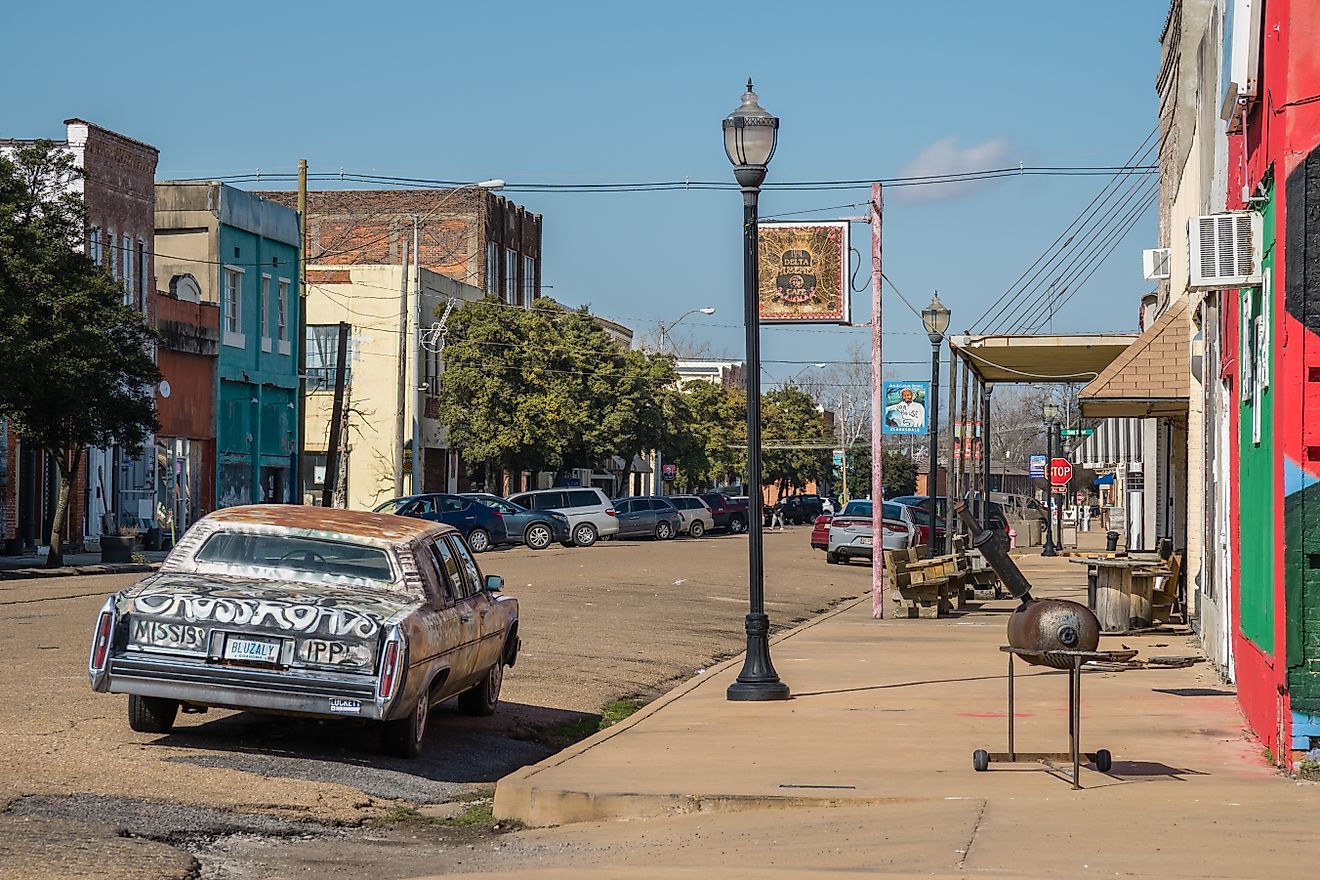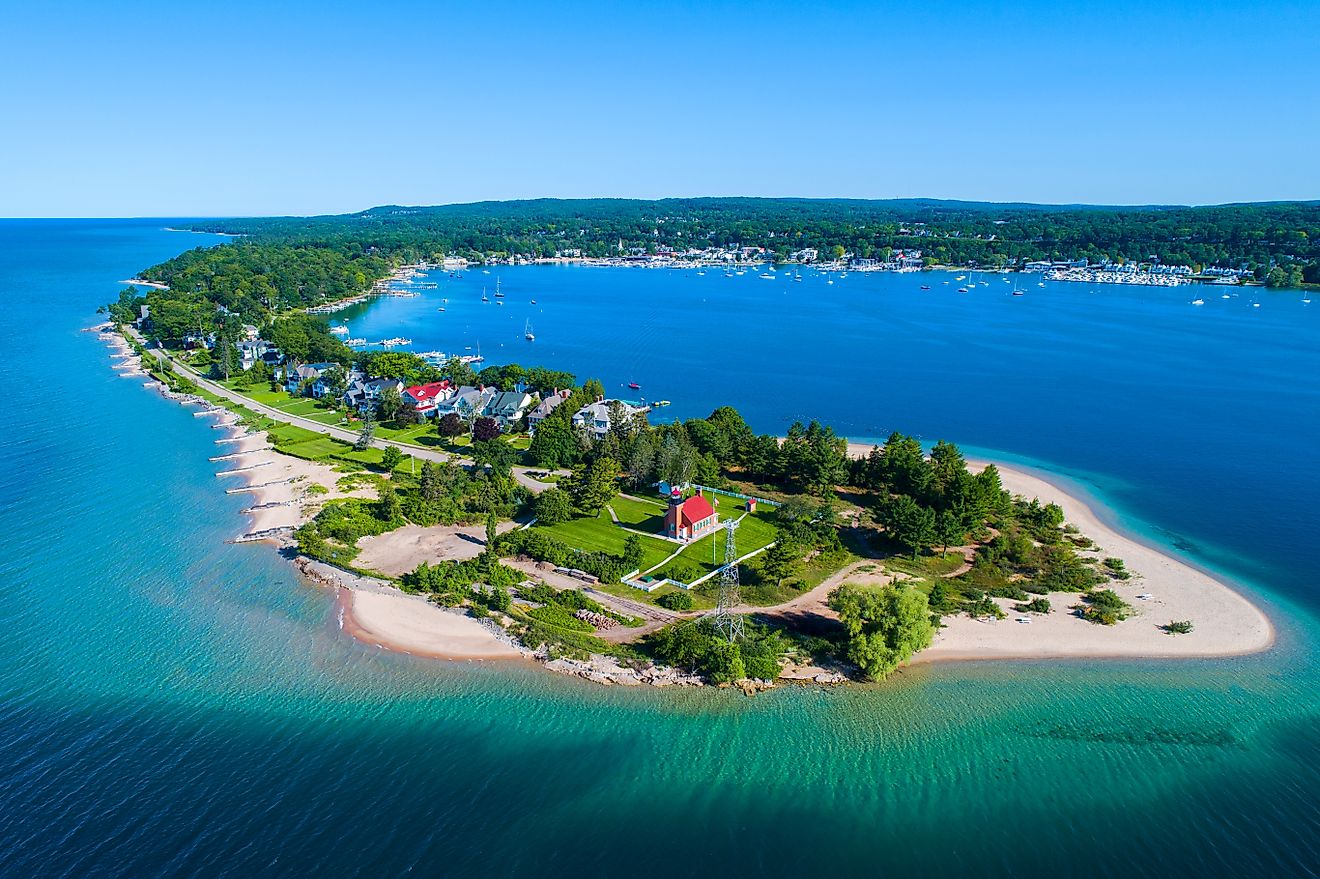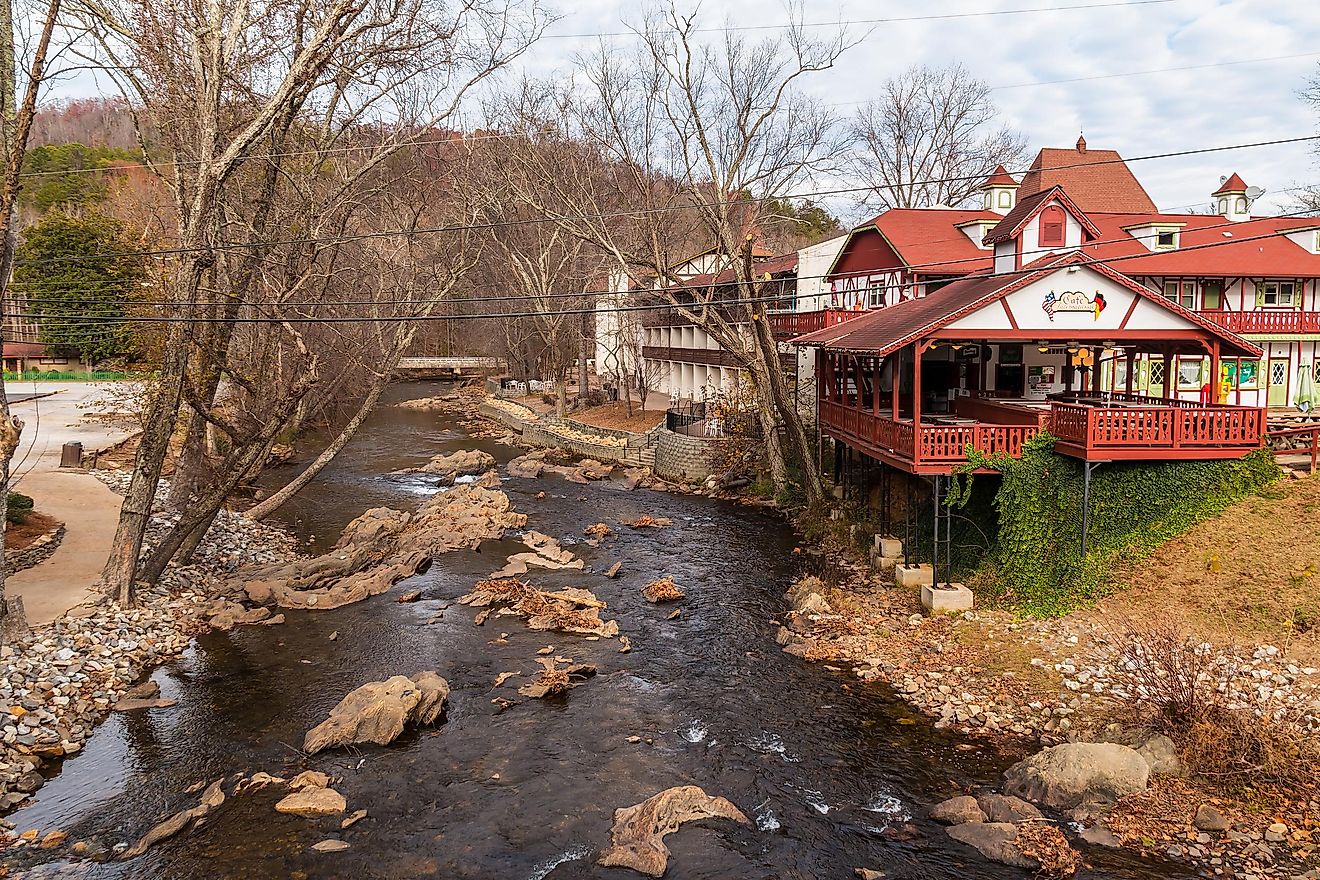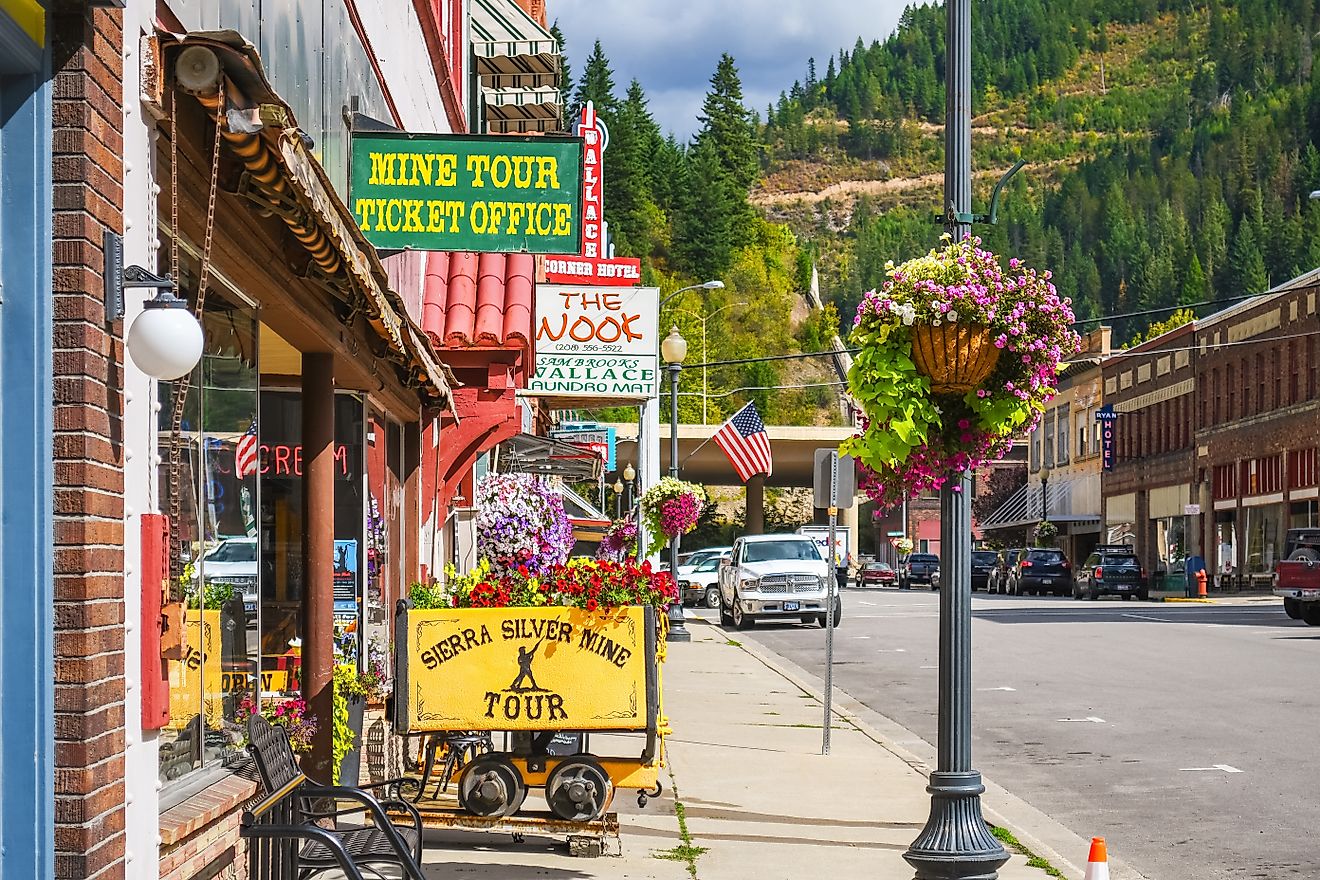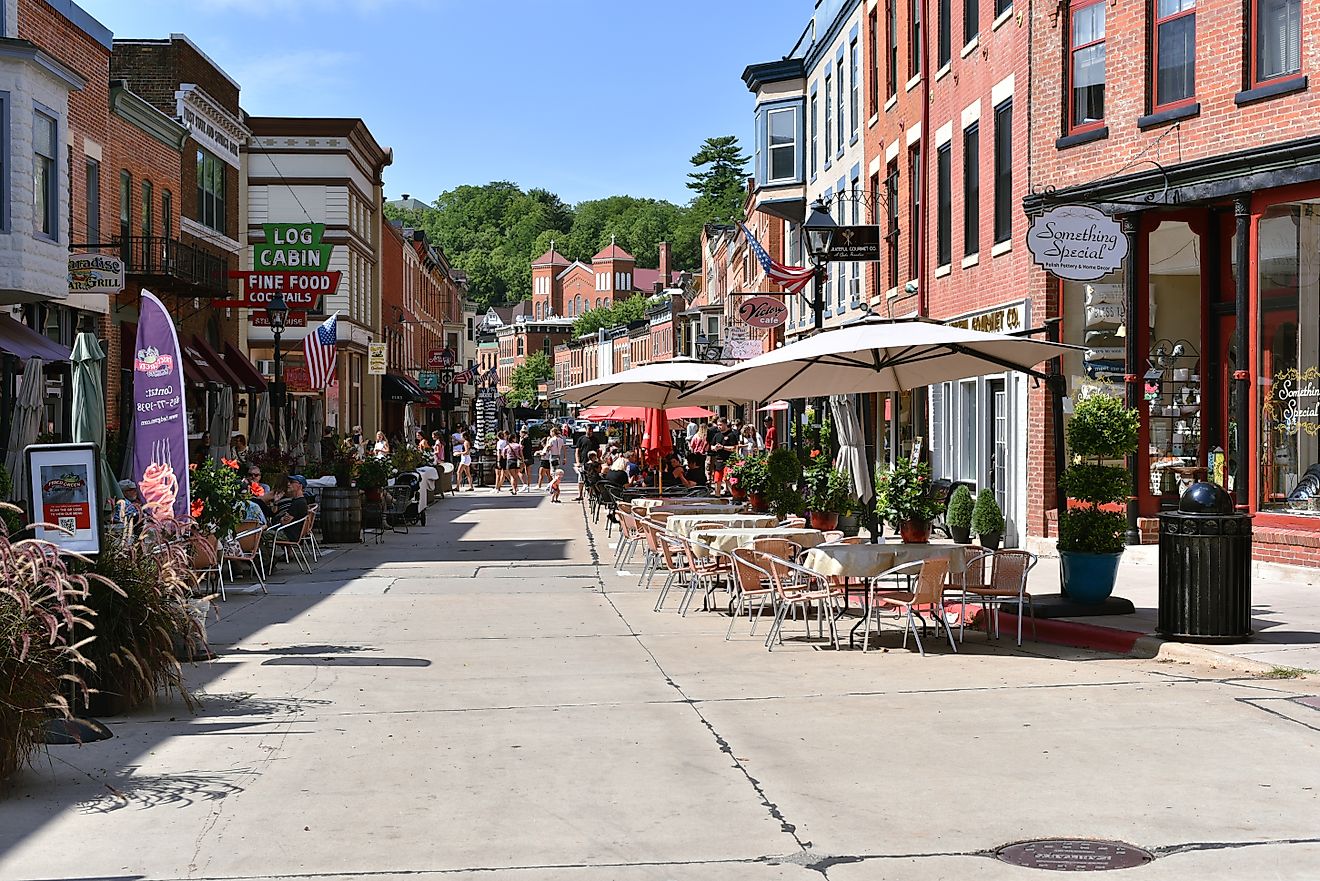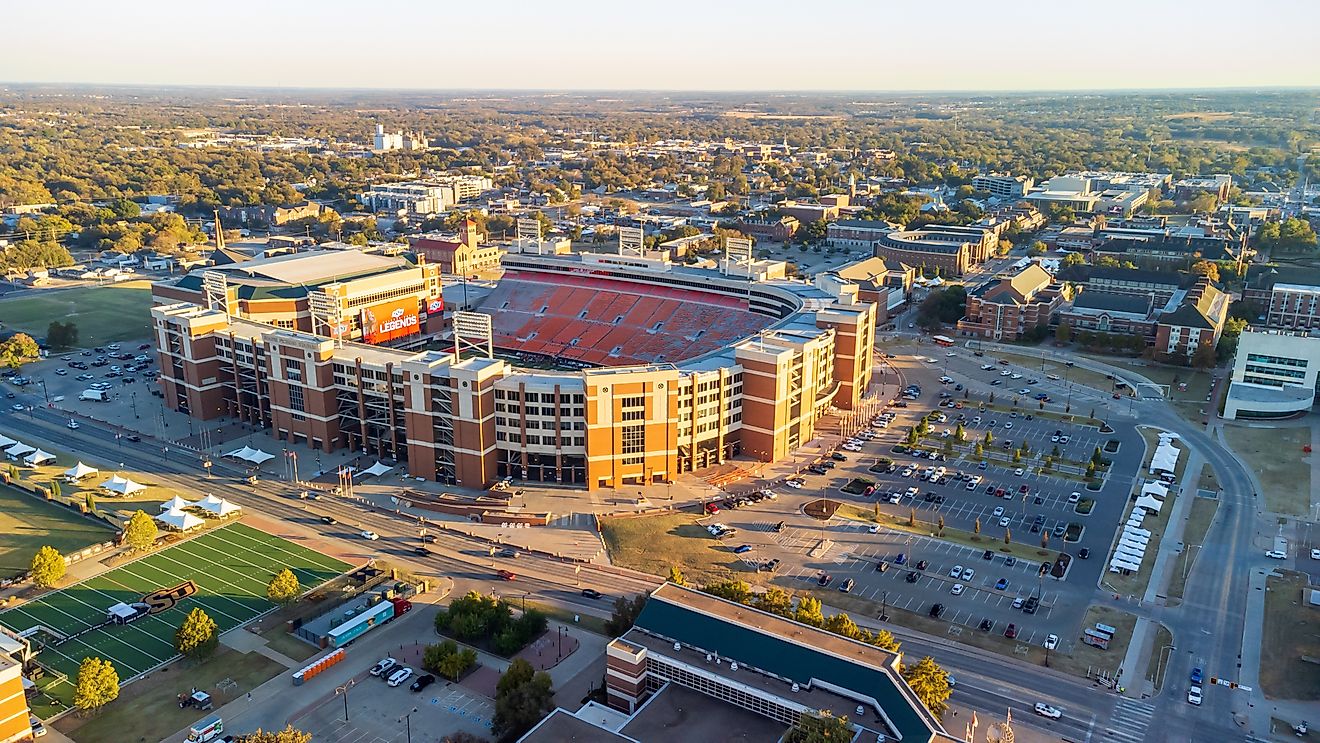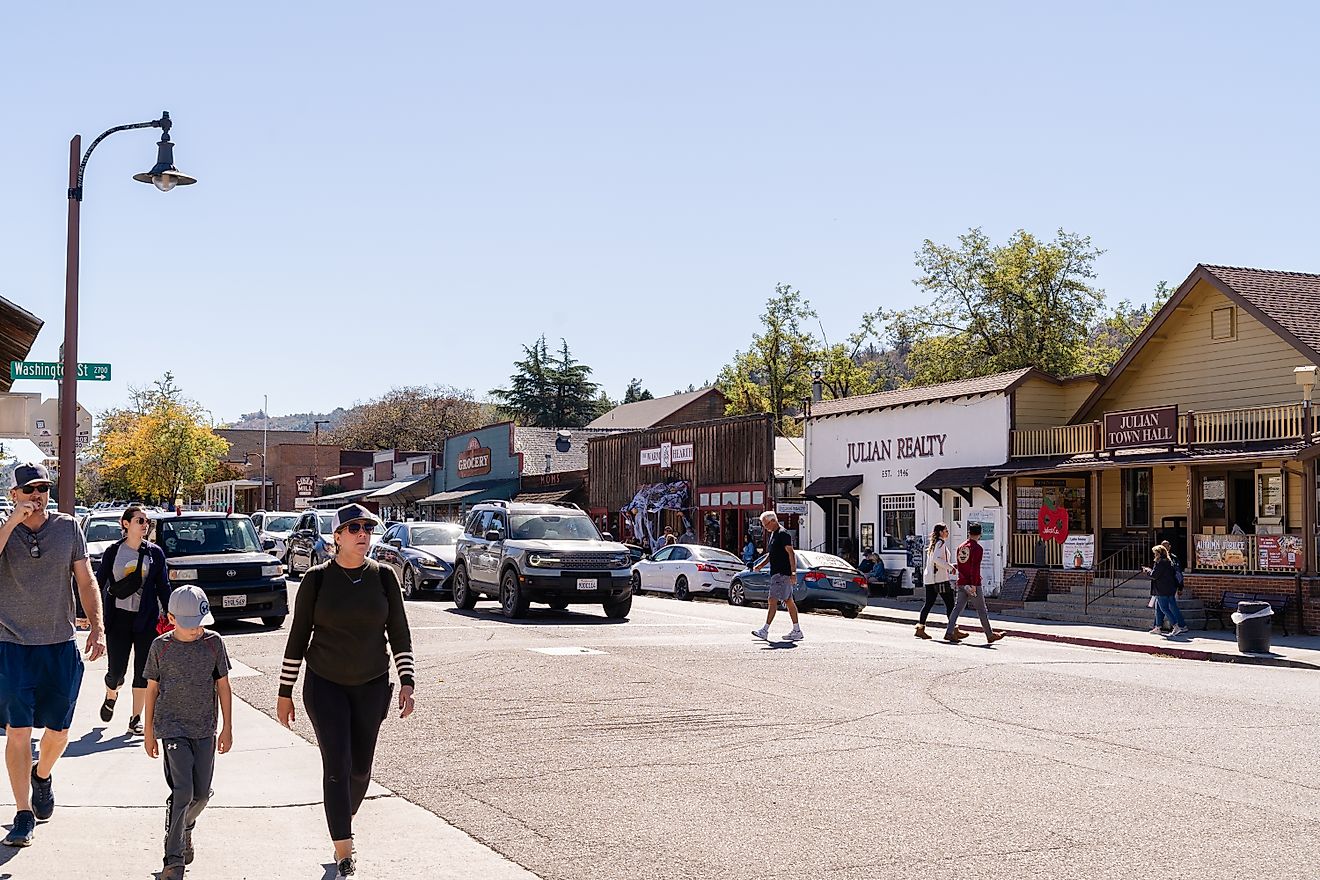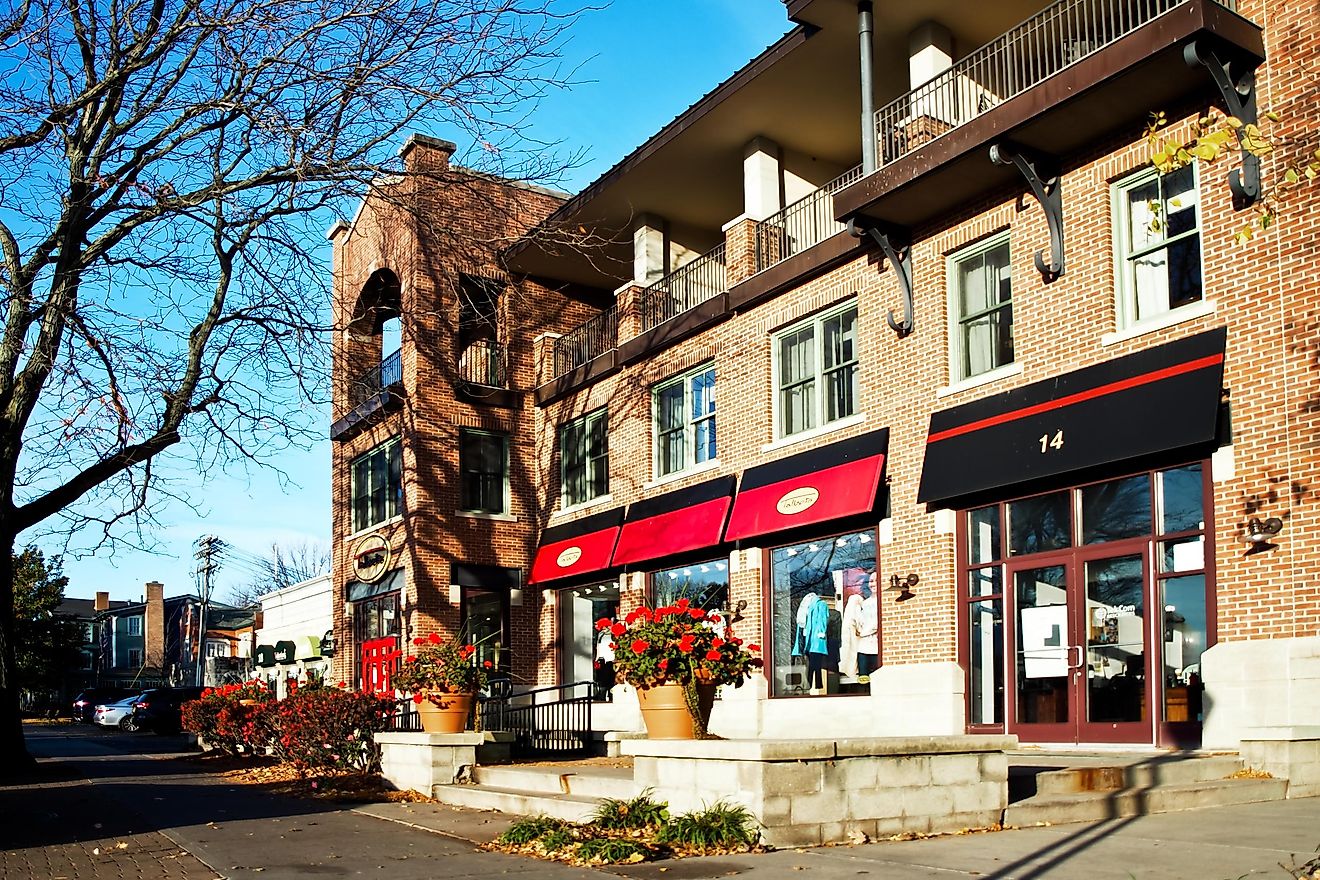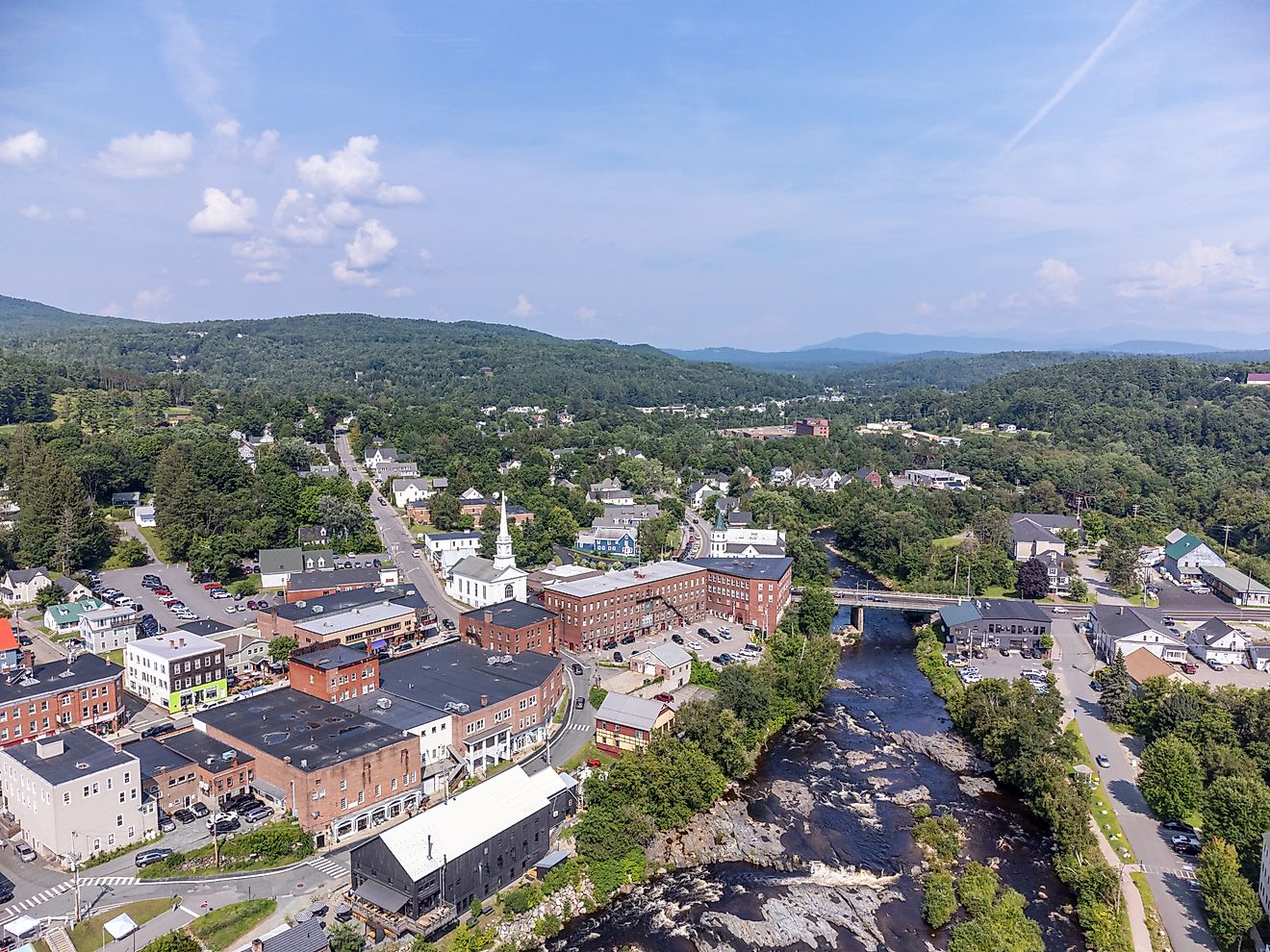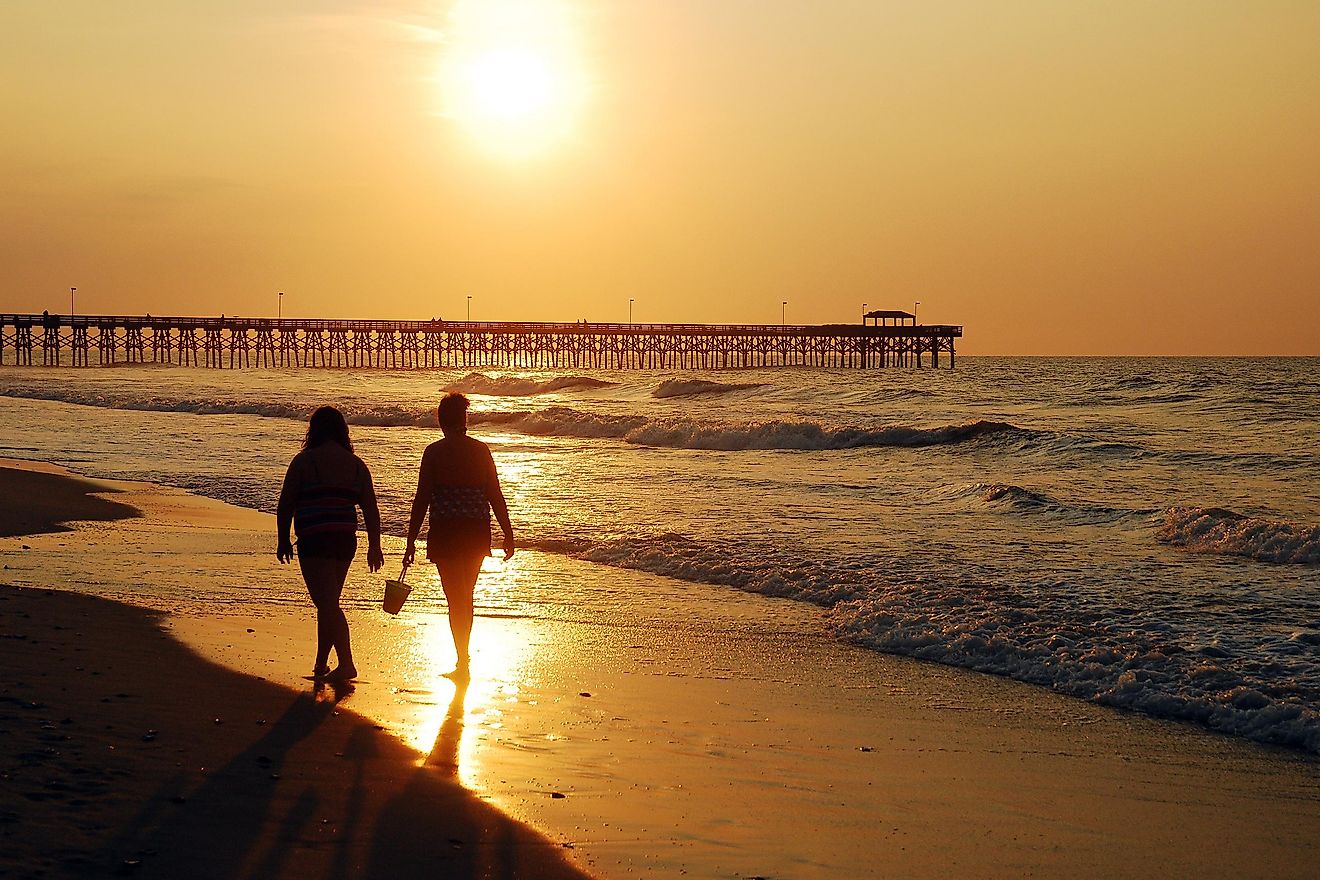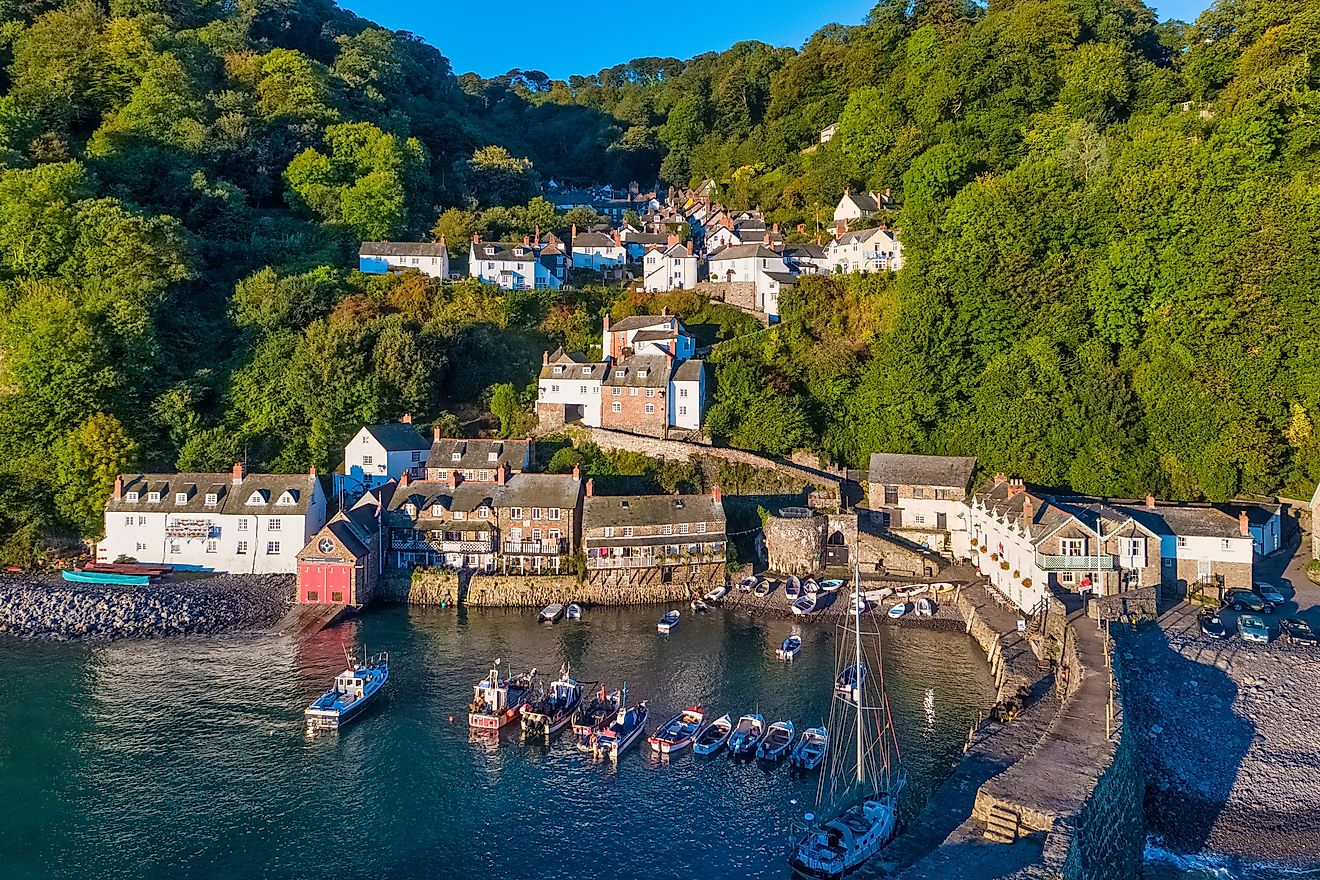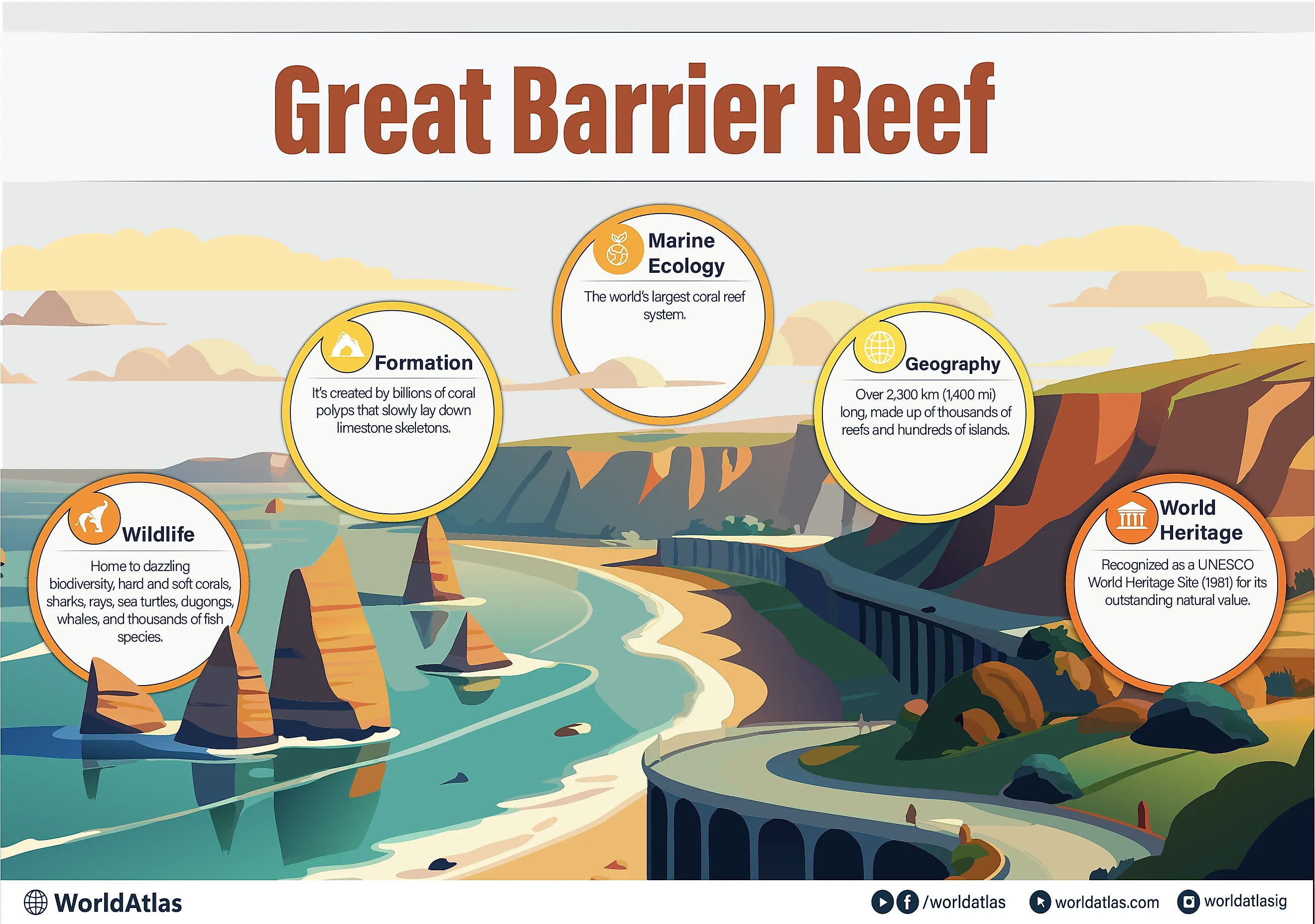
Great Barrier Reef
The Great Barrier Reef is the world’s largest coral reef system located in the Coral Sea off the shore of Queensland, northeastern Australia. It extends over a vast area of approximately 344,4000 sq. km and is is composed of over 2,900 individual reef systems, 760 fringe reefs, 300 coral rays and 900 islands that stretch over 2,300 km. The reef system is composed and built by billions of coral polyps and now supports a wide variety of marine life ranging from ancient sea turtles, reef fish and 134 species of sharks, 400 different hard and soft corals in addition to a plethora of seaweeds. The reef has also cultural significance, as it was used by the Aboriginal Australians and Torres Strait Islanders.
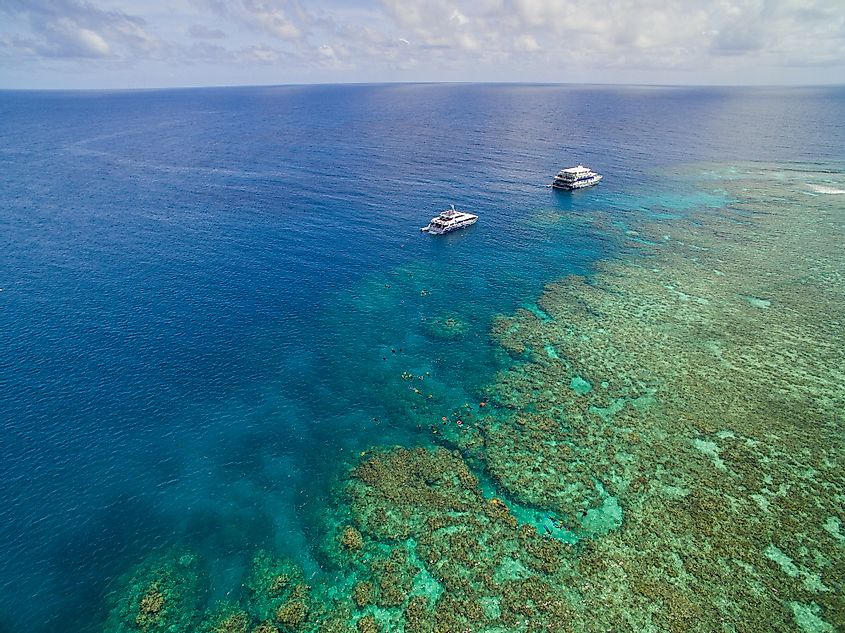
Geography
The Great Barrier reef extends from Torres Strait in the north (a strait between the northern island of Bramble Cay and the south coast of Papua New Guinea) to an unnamed passage between Lady Elliot Island and Fraser Island in the south. The reef extends in a northwest-southeast direction for more than 2,000 km, with an offshore distance ranging between 16 and 160 km and a width ranging from 60 to 250 km.
The Great Barrier Reef World Heritage Area is divided into 70 bioregions, 30 of which are reef bioregions. Ribbon reefs and deltaic reefs can only be found in the northern part of the Great Barrier Reef. Fringing reefs, which are reefs that grow in shallow areas or extend from the shoreline, are most common towards the southern part of the Great Barrier Reef. Crescentic reef can be found in the middle of the system, such as surrounding the Lizard Island, northwest of Brisbane. Planar reefs are found in the northern and southern parts of the system near Cape York Peninsula, Princess Charlotte Bay and Cairns.
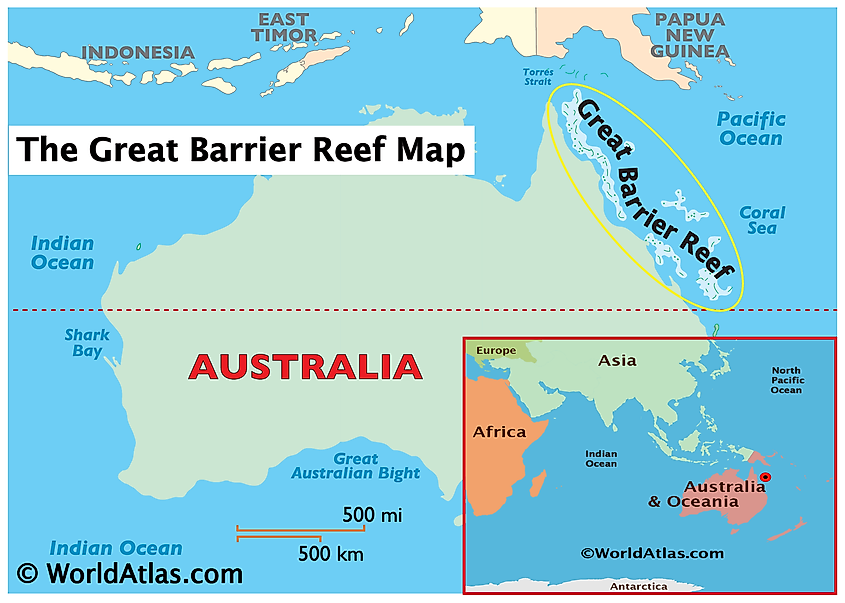
Geology
The plate tectonic theory states that Australia has moved north during the Cenozoic Era. The drainage divide in Queensland was moved about 400 km inland after eastern Australia experienced a tectonic uplift, a process where a piece of land increases in elevation due to plate tectonics. At the same time, volcanic eruptions in Queensland led to central and shield volcanoes and basalt flows, some of which became high islands. Coral reefs began growing only after the Coral Sea basin was formed. However, when Queensland was still in tropical water 24 million years ago, the erosion of the East Australian Cordillera created a sedimentation regime, making conditions unsuitable for coral growth. The sea level then lowered 10 million years ago, distancing the reef’s substrate from suspended sediments that were inhibiting the coral growth. The land forming the substrate of the reef was originally a coastal plain formed from the erosion of the East Australian Cordillera.
The Great Barrier Reef Marine Park Authority (GBRMPA) estimates that complete reef structures date back to 600,000 years ago. According to the Australian Institute of Marine Sciences, current reef growth began at the Last Glacial Maximum. The reefs however share a common origin: the skeletons and skeletal waste of a mass of living marine organisms. The calcareous remains of the coral polyps and hydrocorals form the reef framework, while the coralline algae bind these remains together. As the sea level rose 20,000 years ago, corals were able to grow higher on the newly submerged maritime margins of the hills of the coastal plain. The continental islands, which were then hills of the coastal plain, became submerged as the sea levels continued to rise. The corals then grew over these submerged hills to form the present cays and reefs. Shallow water reefs cover an area of 20,679 sq. km, most of which has grown on top of limestone platforms that date to the Pleistocene phase of reef growth. The remains of an ancient barrier reef, similar to the Great Barrier reef, can be found in the Kimberly, Western Australia.
Ecology And Biodiversity
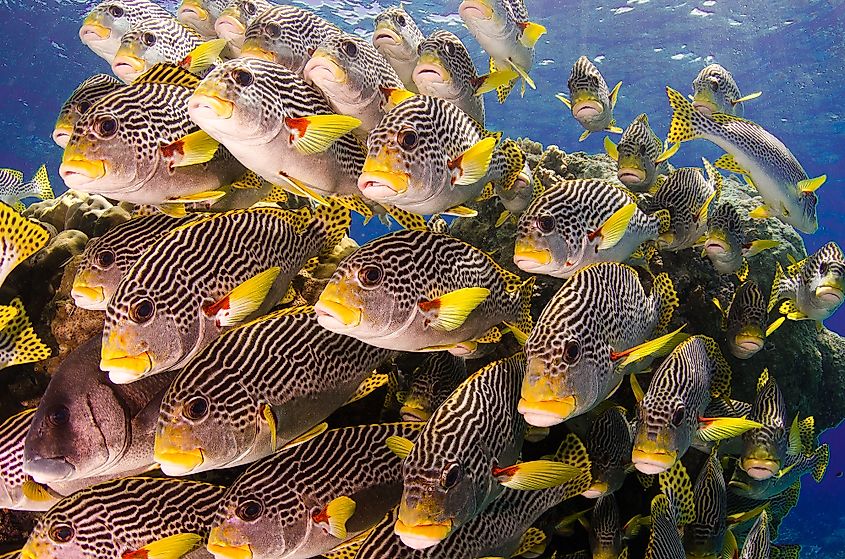
The surface water layer of the southwestern Pacific Ocean forms the water environment of the Great Barrier Reef. The surface water temperature is high, ranging from 21 to 38oC. Marine creatures are visible at depths of 30m.
The Great Barrier Reef is a biodiversity hotspot, housing at least 450 species of hard coral aa well as anemones, sponges, worms, gastropods, lobsters, crayfish, prawns and crabs. More than 1,500 species of fish inhabit the reef, such as wrasses, damselfish, triggerfish, angelfish, rays and sharks. Thirty species of crustaceans have been recorded in the reef, such as the dwarf minke whale, Indo-Pacific humpback dolphin and the humpback whale. Fifteen species of seagrass in beds attract the dugongs and turtles, with six species of sea turtles choosing the reef as its breeding spot. These species include the green sea turtle, leatherback sea turtle, hawksbill turtle, loggerhead sea turtle, flatback turtle and the Olive Ridley.
Most nesting sites for birds are on islands in the northern and southern regions of the reef, attracting 1.4 to 1.4 million birds, including 22 species of seabirds and 32 species of shorebirds. There are 2,195 known plant species in the reef, 3 of those being endemic. These species can either be woody or herbaceous, with the woody being situated mainly in the northern islands and the herbaceous in the southern islands.
Tourism And Threats
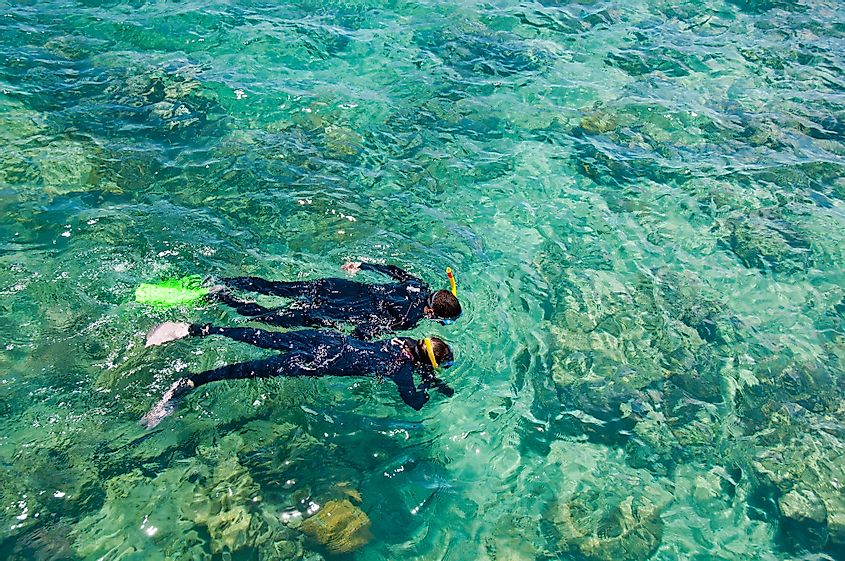
The Great Barrier Reef was selected as a UNESCO World Heritage Site in 1981 and was included in the Australian World Heritage list in 2007. It was also named a state icon of Queensland by the Queensland National Trust in 2006. Having numerous titles, it is deemed a touristic and fishing hotspot, particularly the Whitsunday Islands and Cairns regions. This led to the founding of the Great Barrier Reef Marine Park to limit the impact of human activities and alleviate the environmental burden on the area.
In fact, the reef is subject to many environmental threats such as surface runoff, climate change, coral bleaching, dumping of dredging sludge and outbreaks of crown-of-thorns starfish, a venomous starfish that preys on coral polyps. Moreover, the reef has lost more than half of the it’s coral cover since 1985, according to a 2012 study published in the Proceedings of the National Academy of Sciences. A 2017 paper from Nature stated that increasing ocean temperatures have led to the death of an 800-kilometer stretch in the northern part of the reef.
